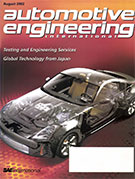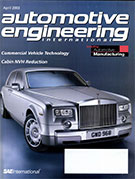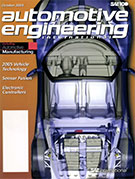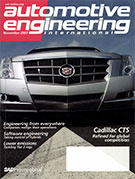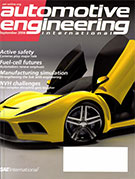Magazine
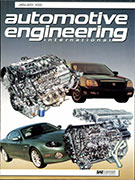
Automotive Engineering International 2000-01-01
2000-01-01
Car of 2100 A.D. AEI gave readers a chance to speak out on what they thought people in 2100 would be driving. We have chosen the best submissions. Also, the AEI editors have included their best guess as to what cars will be in 2100. We realize that this is a guess but the real answer will not be known for 100 years. V8 power for BMW's M5 The new 294-kW (400-hp) S62 engine developed by BMW's M GmbH features Double VANOS variable intake and exhaust valve timing, electronic drive-by-wire, and oil circulation boosted as a function of lateral cornering force. Northstar revised for 2000 Improvements to the powerplant include a roller-follower valvetrain, improved combustion chamber, center-feed intake manifold, coil-on-plug cassette ignition system, and a Siemens powertrain controller. Aston Martin's first V12 Available in both the DB7 Vantage Coupe and Volante, the flexible all-alloy engine delivers 85% of its peak torque at just 1500 rpm.

